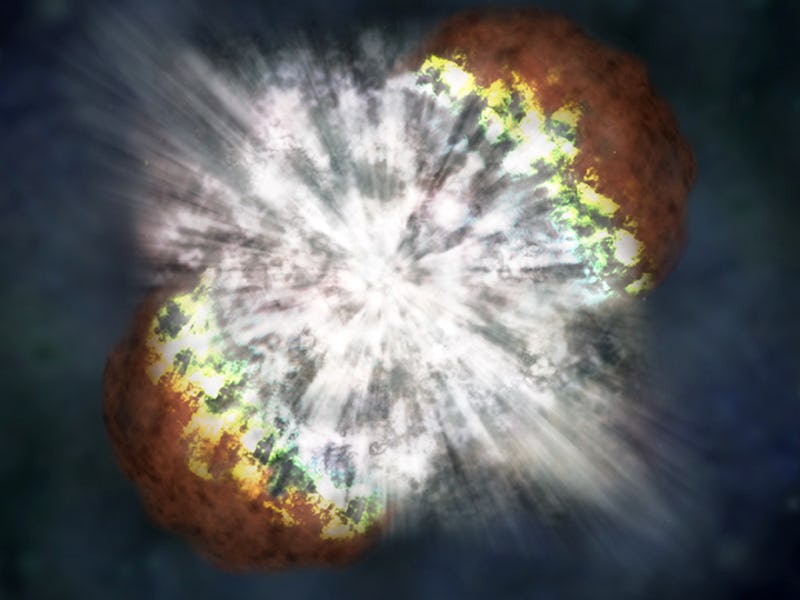
When a star more massive than our sun reaches the end of its life cycle, it goes in a spectacular blaze of glory known as a supernova. This explosion indicates that the star is dunzo, dead, or whatever we call it in the parlance of our times. But a new study found that one unusual star zombie-Jon-Snowed itself and as an astronomer tells Inverse, no one knows quite how.
“It’s unique because it kind of throws everything we truly know about stellar evolution out the window,” Caitlin Ahrens, an astronomer at the University of Arkansas tells Inverse.
Back in 2014, astronomers at the Palomar Transient Factory detected an explosion they called iPTF14hls. After studying its chemical composition, the team concluded it was a Type II-P supernova, meaning its brightness “plateaus” after its maximum, hence the “P” in its name. According to the Carnegie Institute of Washington, this kind of supernova typically remains bright for around 100 days. Everything seemed status quo until the supernova started getting even brighter a few months after scientists spotted it. In fact, iPTF14hls dimmed and brightened five times over a three-year period.
With a little sleuthing, the scientists found a 1954 explosion in the same location as iPTF14hls. The team concluded that the star had somehow exploded in the ‘50s — survived the blast — and exploded again in 2014. One of the team members called the unusual supernova a “zombie star,” since it seemingly refused to die. The researchers’ findings have been published in Nature.
“This star is awesomely weird to say the least,” Ahrens, who was unaffiliated with the research, says. “Typically stars, once they reach iron in their cores (ran out of gas) go supernova and that should be the end. This star (iPTF14hls) refuses to die and keeps exploding!”
LCO/S. Wilkinson. A
While no one’s sure what caused this star to go supernova twice, scientists are certainly beginning to speculate. Who wouldn’t, it’s a zombie star? No matter which way you slice it, this supernova is super weird — in a mostly good way.
“There are a few theories running around, such as the star accumulating metal over and over rapidly, or that it created some sort of antimatter in its core,” Ahrens says.
Here’s to many more zombie stars, and all the spooky new mysteries to explore!